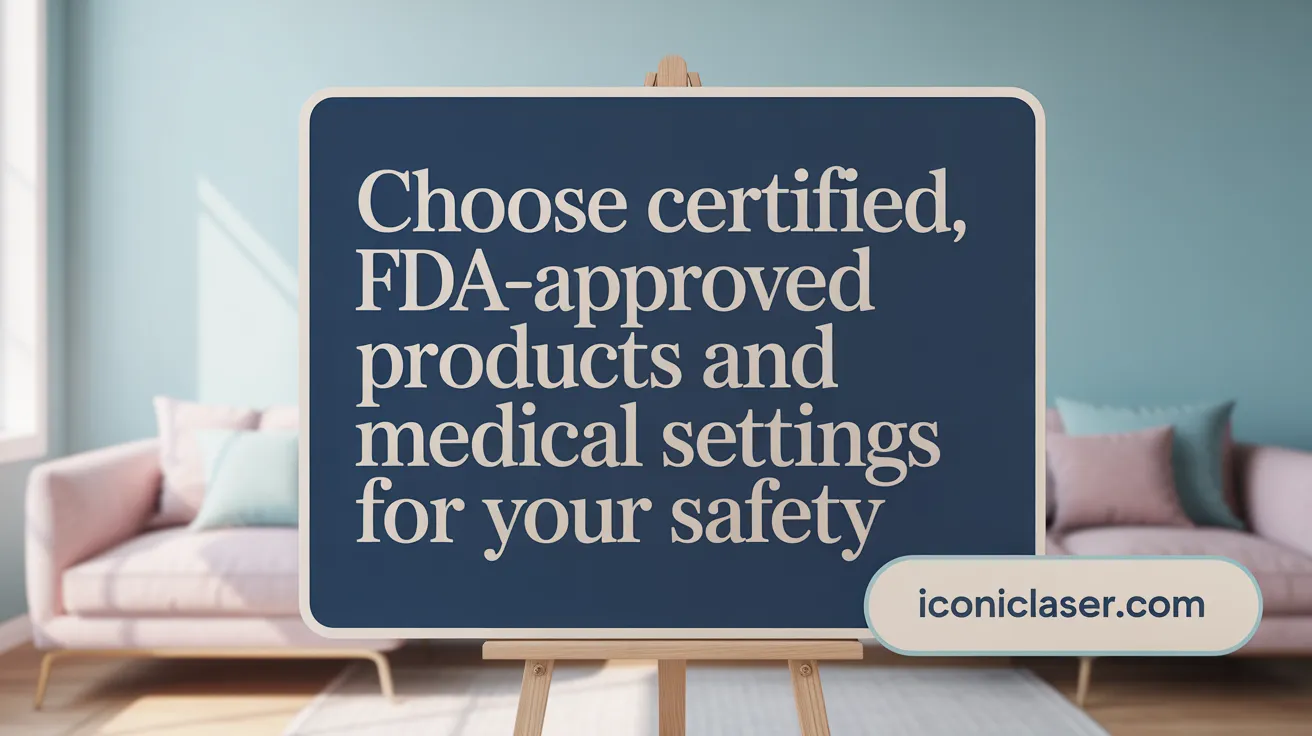Why Safety is Paramount in Injectable Treatments
Professional Administration of Injectables
Injectable treatments, while non-surgical, are intricate medical procedures that must be administered by qualified specialists. Only clinicians certified by recognized boards such as the American Board of Plastic Surgery, Dermatology, or Otolaryngology should perform these treatments. These professionals possess the necessary anatomical knowledge and practical expertise to minimize risks and ensure patient safety.
Viewing Injectables as Medical Procedures
Treatments like neurotoxins and dermal fillers are not mere cosmetic applications; they involve precise injections beneath the skin, meaning they carry potential medical risks such as bruising, swelling, and, in rare cases, severe complications like vascular occlusion. Therefore, procedures must occur in sterile, properly equipped medical environments using FDA-approved products purchased domestically to uphold safety standards.
Patient Role in Safety and Decision-Making
Patients play an essential role in their own safety and outcomes through full disclosure of medical conditions and medications, ensuring open communication with their providers. They should be informed thoroughly about the risks, expected results, and aftercare instructions. Informed consent is a dynamic process involving shared decision-making and clarity—not just a formality. Patients should also verify the credentials of their injectors and understand exactly which products are used during treatment.
By emphasizing professional care, recognizing injectables as true medical procedures, and fostering informed patient participation, the safety of injectable treatments is fundamentally safeguarded.
Selecting Qualified and Certified Providers

Who should administer injectable treatments to ensure safety?
Ensuring safety in injectable treatments hinges on the qualifications and certifications of the clinicians involved. Only trained and qualified professionals should perform these procedures. This includes physicians certified by recognized boards such as the American Board of Plastic Surgery, Dermatology, or Otolaryngology. In addition, membership in professional organizations like The Aesthetic Society is an important indicator of a provider's commitment to high standards and ongoing education.
Competence extends to nurses and physician assistants who may administer injections but must do so under the supervision of qualified surgeons. This supervision ensures adherence to safety protocols and correct technique.
Patients should exercise caution by avoiding providers chosen solely based on cost to reduce the risk of complications or substandard care. Verifying that treatments take place in appropriate and sterile medical environments, such as licensed medical offices or medical spas, further safeguards patient health.
Choosing a clinic that meets these criteria fosters a treatment experience that prioritizes safety, professionalism, and optimal aesthetic outcomes.
Understanding the Medical Nature and Risks of Injectable Treatments

What risks should patients understand before receiving injectable treatments?
Injectable treatments, though non-surgical, are medical procedures that require careful consideration of risks. Patients must understand that side effects like bruising, swelling, redness, and mild pain are common and generally temporary. However, more serious risks, although rare, include inadvertent injection into blood vessels, which can cause tissue necrosis, stroke, or vision loss. For detailed information, refer to the Injectable Safety Guide and specific Risks of Injectable Procedures.
Why is disclosure of medical history and medications important?
Full disclosure of one’s medical conditions and medication use is crucial. Certain health issues or drugs can significantly increase the likelihood of adverse reactions during or after treatment. This transparency enables the clinician to tailor the procedure safely and avoids potentially dangerous complications. Learn more about Disclosure of Medical Conditions and Patient Safety in Dermatology.
What are the risks specific to different injectable types?
Neurotoxins such as Botox block muscle contractions to reduce wrinkles but carry risks like swelling, headache, or drooping eyelids in rare cases. Dermal fillers vary by composition—commonly hyaluronic acid, calcium hydroxylapatite, or poly-L-lactic acid. Risks include asymmetry, lumps, or, most seriously, vascular compromise leading to tissue damage. Permanent fillers carry added risks of difficult removal and longer-term complications. Explore more about Botox Treatment in Troy Michigan, Dermal Fillers Overview, and the Safety of Dermal Fillers.
Why is detailed informed consent essential?
Informed consent is a critical part of patient safety. It is a shared decision-making process where clinicians educate patients on risks, benefits, and alternatives. This communication ensures patients have realistic expectations about outcomes, side effects, and recovery. Consent documents provide a record, but thorough verbal explanation ensures understanding and promotes trust. See more about Informed Consent as Shared Decision-Making and Communication on Treatment Risks.
Patients should only receive injectables from qualified, board-certified providers in medical settings who use FDA-approved products. Understanding the medical nature of injectables and associated risks, coupled with proper disclosure and informed consent, helps safeguard patient safety and achieve natural, satisfactory results. For information on qualified providers and FDA-approved products, visit Qualified Clinicians for Injectables and Medical Aesthetics Clinic in Troy.
The Crucial Role of FDA-Approved Products and Safe Environments

What products and environments ensure safety during injectable treatments?
Safety during injectable treatments depends fundamentally on the exclusive use of FDA-approved injectable products that are purchased within the United States. These products have undergone rigorous testing to ensure their quality and safety for patients.
Injectable procedures must be performed only in sterile, medical environments such as medical office or spa injection settings. These settings maintain strict hygiene and safety protocols designed to minimize the risk of infection and complications.
It is essential to avoid receiving injections in non-medical locations such as malls, private homes, or other informal venues, as these lack the proper sterile environment and medical supervision necessary for patient safety.
Qualified clinicians for injectables must closely supervise procedures and strictly adhere to safety protocols. This includes proper patient assessment, informed consent for injectables, and post-treatment monitoring to ensure safe and effective outcomes.
Patient Preparation and Post-Treatment Care for Optimal Safety

What should patients do before and after injectable treatments to ensure safety and effective results?
Proper preparation and diligent post-treatment care are essential for safe and successful injectable procedures. Before treatment, patients should avoid blood thinners such as aspirin or certain supplements to reduce the risk of excessive bruising and bleeding. It is equally important that patients are not intoxicated during the procedure to ensure clear communication and optimal treatment safety. For detailed pre-treatment guidelines and patient safety tips, refer to the Injectable Safety Guide.
After the treatment, applying cold compresses and using Arnica, a natural anti-inflammatory, can help minimize swelling and bruising. Patients should also avoid strenuous activities and refrain from facials, massages, or other procedures involving the treatment area for at least two weeks. This precaution helps prevent unwanted movement or migration of the injectable material. For specific advice on minimizing bruising and post-injection care, see Aesthetic Injections in Troy Michigan.
Maintaining follow-up appointments with the provider is critical. These visits allow clinicians to monitor healing, address any complications early, and ensure treatment goals are met. Clear communication between the patient and their provider throughout this process supports a safe experience and satisfaction with results. For guidelines on post-treatment follow-up and communication, consult the Injectable Safety Guide and Patient safety in dermatology.
Innovations and Personalized Care in Injectable Treatments

What advances and options are available that prioritize both safety and aesthetics in injectable treatments?
Modern injectable treatments have evolved to offer a diverse range of options tailored to meet individual aesthetic goals while prioritizing patient safety. These options include neurotoxins such as Botox and the newer Letybo, which effectively relax muscles to soften wrinkles for several months.
Dermal fillers have advanced beyond traditional offerings to include hyaluronic acid-based products like Juvederm products in Troy and Restylane injections, which restore volume and smooth moderate to severe facial wrinkles. Additionally, biostimulators and innovative fillers such as Bellafill dermal filler provide unique benefits. Bellafill stands out as the only FDA-approved filler that stimulates natural collagen growth for up to five years, offering long-lasting youthful appearance with immediate and sustained results.
These dermal fillers include the common dermal fillers composition (hyaluronic acid, calcium hydroxylapatite, poly-L-lactic acid) which address volume loss and contour restoration safely and effectively.
Treatment plans are highly personalized, considering the patient’s facial anatomy, aesthetic goals, and medical history. Such customization ensures natural-looking outcomes and avoids overcorrection or asymmetry. Board-certified specialists with extensive training employ the latest injection techniques to deliver precision and safety, reinforcing Qualified clinicians for injectables.
Patient education is integral throughout the process. Specialists inform patients about the specific injectable products used, expected effects, possible side effects, and post-treatment care following the Injectable Safety Guide. This transparency fosters trust and helps patients make informed decisions.
By combining advanced injectable options, expert techniques, and tailored care plans, clinics achieve safe, effective, and natural facial rejuvenation results informed by best Injectable safety guidelines and Patient safety in dermatology.
Ensuring Confidence Through Safety and Expertise
Recap of Critical Safety Considerations
Injectable treatments, while minimally invasive, require administration by trained, qualified clinicians in sterile medical environments using only FDA-approved products. Patients must disclose medical history and medications to minimize risks and follow post-treatment instructions carefully. Providers should demonstrate certification by reputable boards and membership in professional societies to ensure competence and safety.
Encouraging Informed Decisions and Thorough Consultations
Informed consent is a vital part of the process, involving a clear discussion of the specific injectable brands, risks, benefits, expected results, and potential side effects. This shared decision-making helps patients understand the scope and limitations of their treatment.
Trust in Certified Professionals to Achieve Safe, Effective Results
Choosing certified professionals ensures personalized plans aligned with patient goals, prioritizing natural-looking outcomes and safety. Verification of credentials and treatment in appropriate clinical settings builds patient confidence, enabling satisfaction and optimal results.
